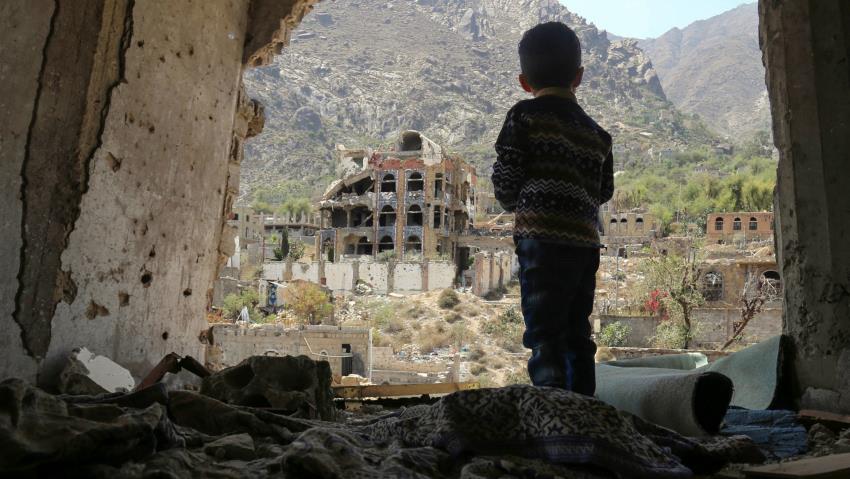The Yemeni Civil War is an ongoing conflict that has produced enormous instability and destruction in Yemen. In particular, the Saudi Arabian-led aerial bombing campaign has resulted in immense devastation within the region, giving rise to numerous civilian casualties and forced displacement. Things such as food shortages are commonplace and the vast majority of the Yemeni population is now considered in need of aid. The United Nations has referred to the civil war and its ensuing ruin as “the world’s worst humanitarian crisis”.
Overview of the Conflict
The Yemeni Civil War began in 2014 when the then president of Yemen, Abdrabbuh Mansur Hadi, was ousted from power after losing control of the capital after a coup d’etat by the Houthi movement. Hadi subsequently fled the country and eventually sought asylum in Saudi Arabia. Since then, Yemen has been ravaged by a multi-sided conflict between the Houthis, the Saudi-led coalition, the Southern Transitional Council, and al-Qa’ida resulting in the catastrophic devastation of the region.
The Houthi movement, officially known as Ansar Allah (Supporters of God), is a predominantly Zaidi Shi’a political movement whose stated goals revolve around combating economic insecurity and political marginalization within Yemen. Following a period of political instability and turmoil after the 2011 Yemeni Revolution, they seized political power in Yemen with a military coup and took control of the capital Sana’a. This forced the former president Hadi to resign before fleeing to Aden and declaring that the Ansar Allah takeover of Yemen was illegitimate and he remained president. Hadi also declared that Aden was to be considered a temporary capital for the time being.
Following the Houthi coup d’etat, Saudi Arabia gathered a coalition consisting of the United Arab Emirates, Senegal, Sudan, Morocco, and Qatar and launched military operations against Ansar Allah, focusing primarily on airstrikes. Sudan, Morocco, and Qatar have since officially withdrawn much of their aid, but the coalition still remains. The stated goal of this coalition is to restore the former government of Abdrabbuh Mansur Hadi to power, describing the Houthi movement as a rebellion. Military operations to reinstate Hadi have been ongoing since 2015. However, since 2018, when the Southern Transitional Council, a secessionist group in South Yemen, seized control of Aden, the coalition has been ruptured. With Saudi-backed pro-Hadi forces frequently clashing with UAE-backed southern separatists.
As of now, Ansar Allah controls the capital, Sana’a, and all of North Yemen aside from the Marib Governorate. An Ansar Allah-led military offensive has been ongoing since February 2021 with the aim of reclaiming the city of Marib, and reports are suggesting that Saudi Arabia is looking for an exit strategy after half a decade of disastrous military operations. Victory and the end of the war seem to be within Ansar Allah’s grasp, but the toll that the conflict has taken on Yemen’s population is severe and won’t be ended so easily.
The Human Cost
The human cost of the Yemeni Civil War has become catastrophic. More than 230,000 people have died as a result of military operations in Yemen. 130,000 of these deaths came about from indirect causes, such as food scarcity and lack of healthcare. The fighting has stretched the country thin and devastated the nation. 85,000 children have starved to death as of 2018 according to Save the Children. There are also, reportedly, more than 3 million people who have been displaced and driven from their homes and forced to leave Yemen.
Saudi-led air raids are the clear primary cause of this humanitarian disaster. These airstrikes have been responsible for killing and injuring nearly 20,000 civilians. They also devastate the country, destroying infrastructure and contributing significantly to the lack of food and water, and healthcare. Of the Saudi Arabian drone strikes, only 34% hit military sites. 31% of places hit with drone strikes are non-military civilian sites, and 35% are labeled “unidentifiable”. 31% of non-military civilian sites consist of residential areas, schools, hospitals, markets, and civilian vehicles. It has gotten to a point where labelling the Saudi Arabian campaign in Yemen as anything less than a genocide seems to minimize the amount of harm caused by this conflict.
Aiding and Abetting
Saudi Arabia and its coalition are not responsible for this humanitarian disaster alone, however, the nations aiding and abetting it are also to blame. The United States, as one of the world’s largest weapons traders, has a hand in the destruction. After Joe Biden was elected as president of the United States, he announced that he was committed to ending arms sales to Saudi Arabia and the UAE. However, since that time, sales to the UAE have continued and the brief pause in sales to Saudi Arabia has seemed to reach its conclusion, with the US set to sell Saudi Arabia more missiles.
Aside from the United States, another major trade partner of Saudi Arabia is Canada. Whilst the Canadian government consistently contributes funding for aid in the humanitarian crisis facing Yemen, it has also consistently sold arms to Saudi Arabia and its coalition. The inherent contradictions in these actions go seemingly unnoticed within most of the mainstream press but is not lost on those who are worst affected by these arms sales. Donating $69.9 million towards humanitarian relief in the Yemen Crisis doesn’t seem so noble when it’s revealed that, at the same time, you are profiting $2.8 billion from arms sales to Saudi Arabia and its genocide in Yemen.
Edited by Yu Xuan Zhao
Alexander Morris-Schwarz is a third-year student at McGill University where he is majoring in Political Science with a minor in Communication Studies. Alexander is currently a staff writer for Catalyst and he is interested in international relations and imperialism.

